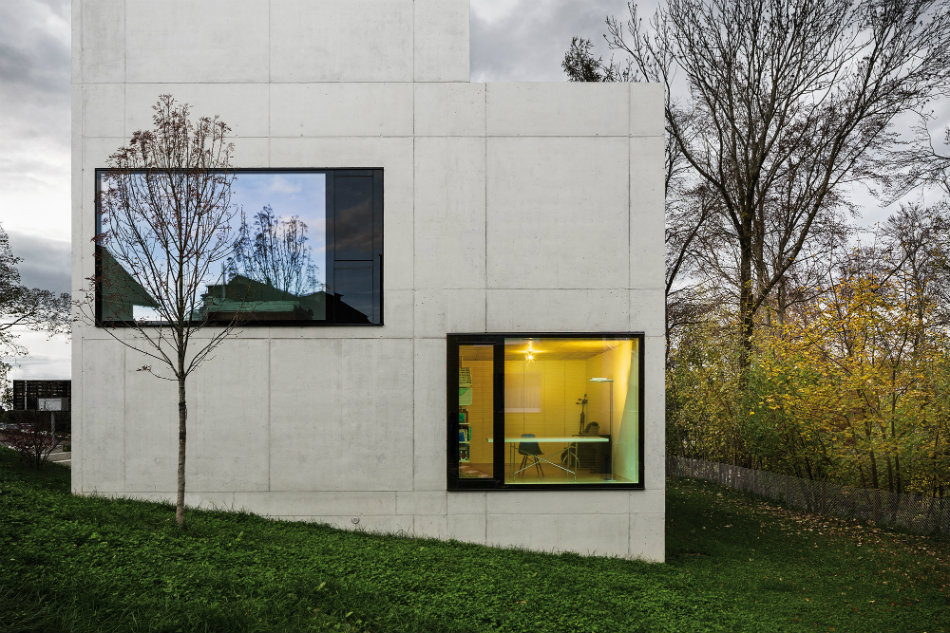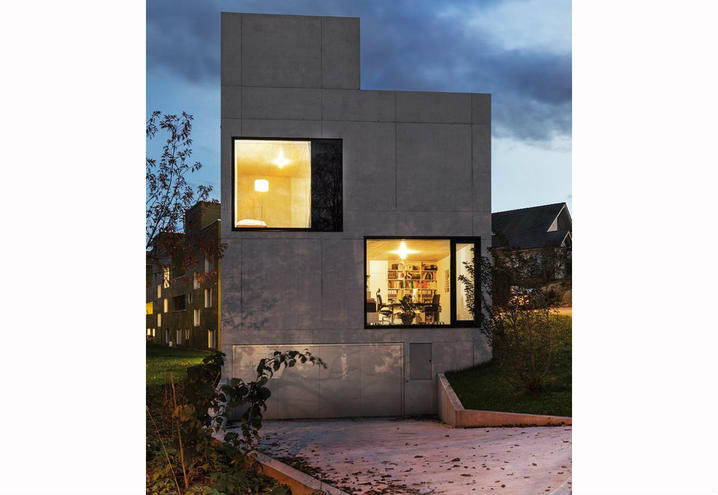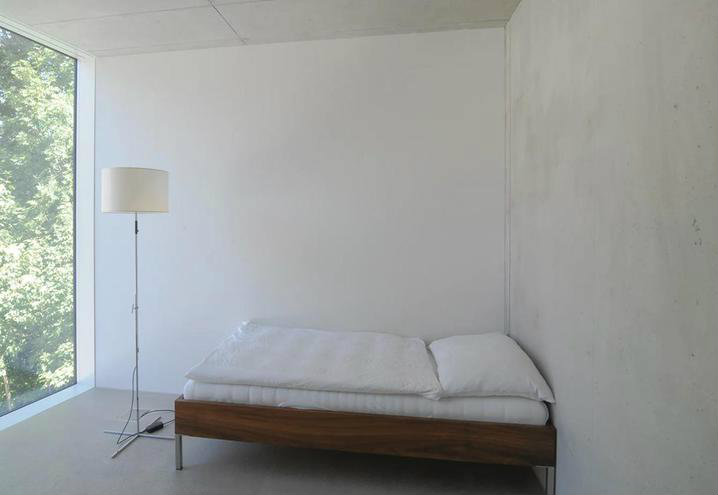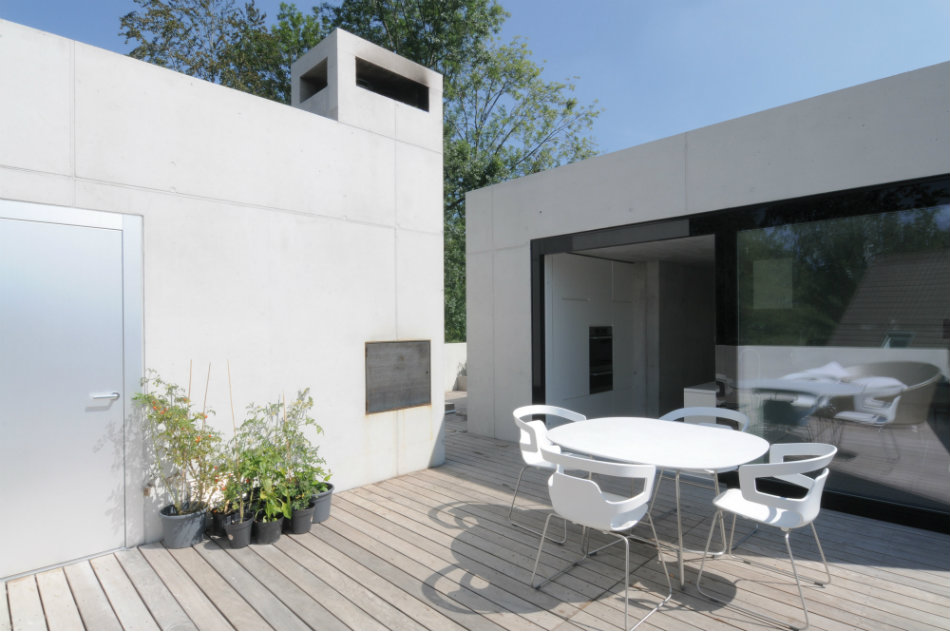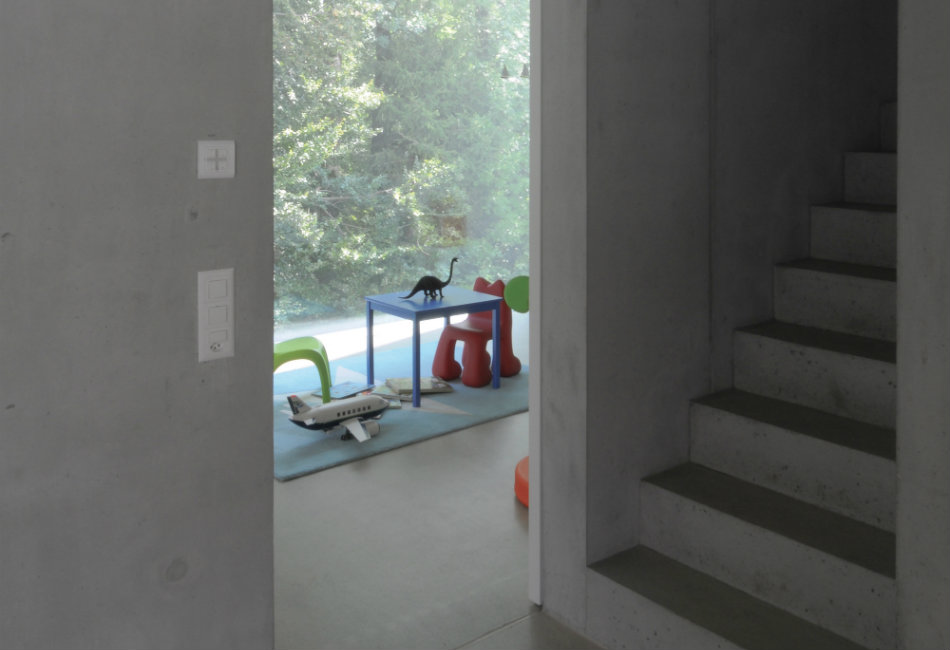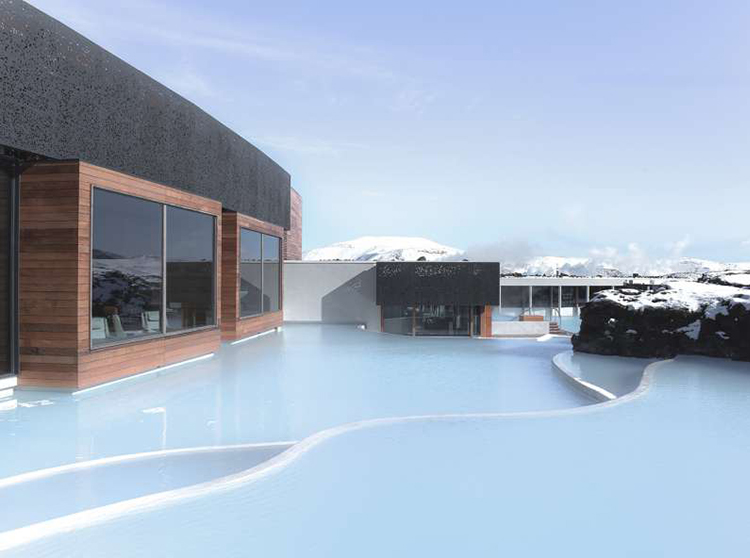Description from Amrein Herzig
The slight rotation compared to the long volumes of the terraced houses and its polygonal form give the tower-like monolithic apartment building a stronger autonomy, thereby benefiting its relationship with the two neighbouring buildings on the other side of the street. This creates a village environment, an expanded street space towards which the building entrances are aligned.
Local construction law permitted a loft, but only with great limitations. Since it was to be expected that the rooftop terrace would have the best exterior spatial qualities on the whole plot, it was impossible to do without those advantages despite the difficulties involved in a loft construction. So the unusual step was taken of initially using volume studies to find a satisfactory sculptural solution including a loft, before moving on to the interior organisation.
The interpolated basic form of the residential and studio building exploits the maximum space available within the confines of the construction site. The quadrangular form is dissolved in the loft, where two volumes occupy opposite corners. That gives the form a maximum vertical effect and achieves the same basic sculptural theme on all sides. The storeys are split into four sections using voluminous partition walls that accommodate all auxiliary uses including the stairways. The space and spatial perimeters are dual, as are the figure and the ground plan. The available spatial layers define the main rooms, which merge into each other and structurally open out to each of the exterior sides respectively, alternating on each floor. This principle is applied throughout the building and leads to a coherent monolithic overall structure consisting of fair-faced concrete.
The residents can use a wide range of apparently identical rooms. They are given their specific uses depending on their alignment, sunlight conditions and accessing possibilities. The spatial experience inside the building is defined by the diagonal visual relationships and the direct presence of the exterior space above the room-high, frameless glass panes. The industrial shell gives the fair-faced concrete an almost shiny surface. It combines with the façade-flush glazing to create a 21dematerialised, ambivalent surface that gives the building a deliberately unapproachable expression. During the day, the effect is strengthened by the reflection of the surroundings in the windows. At night, in artificial light, the openings can be read as consistent spatial imprints of the inner structure.
